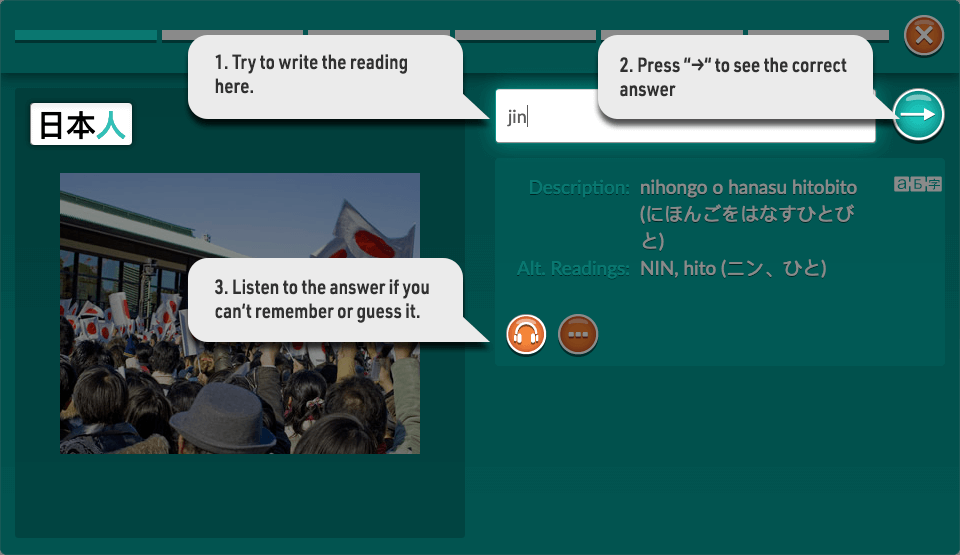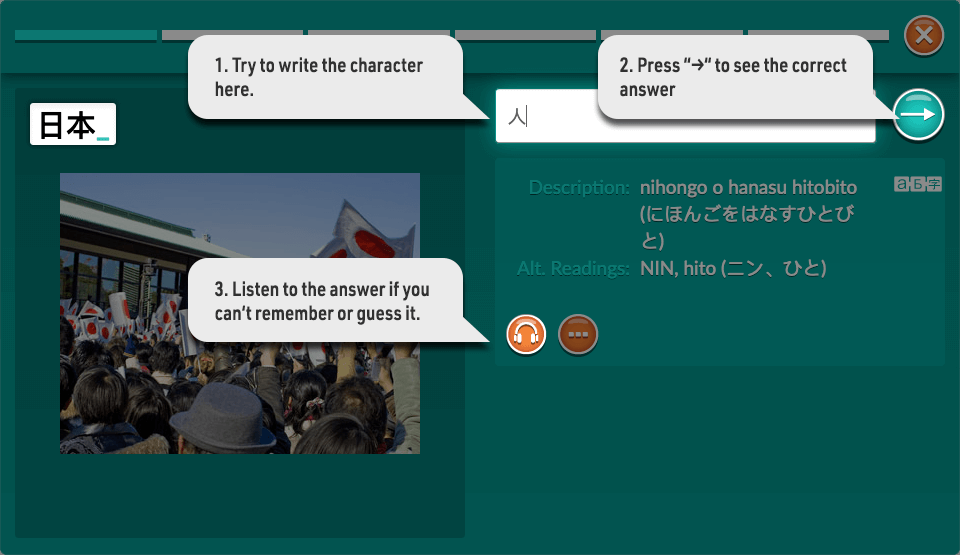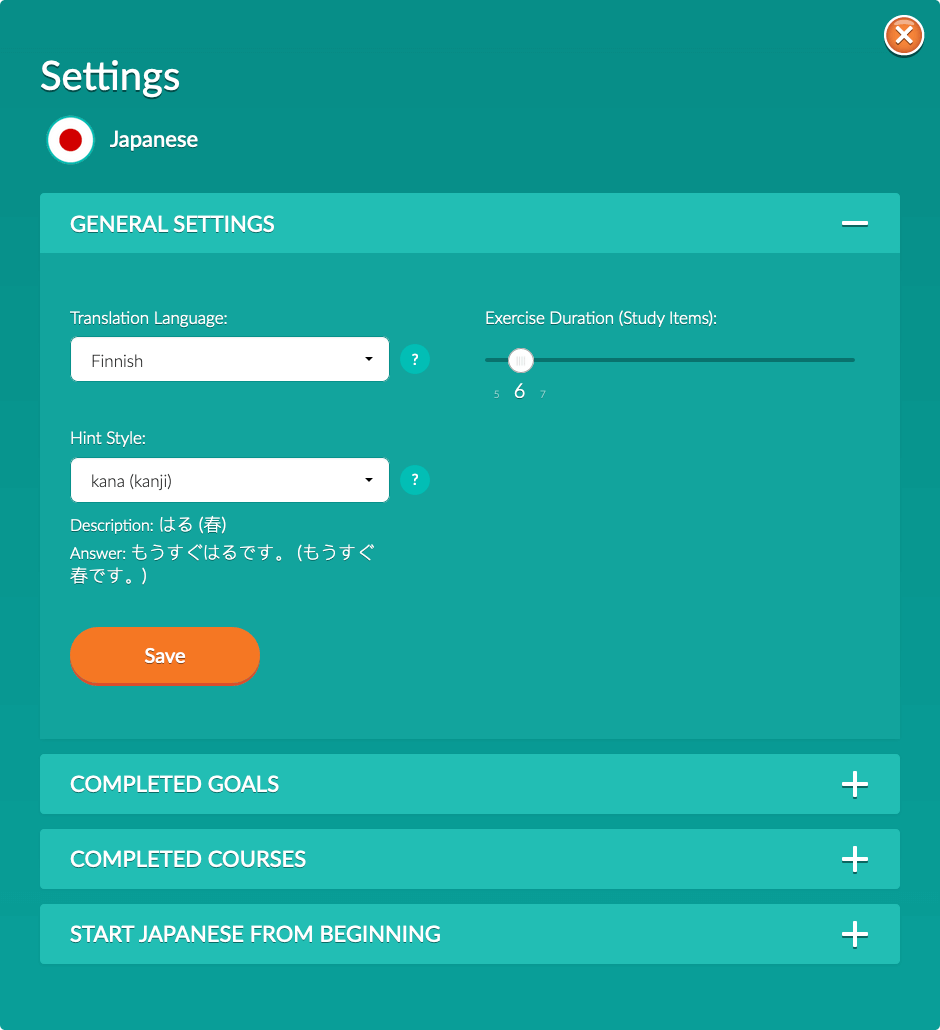Kanji characters
Kanji characters (漢 字, 漢 (kan) = Chinese, 字(ji) = character) were born from drawn symbols and borrowed from Chinese ca. 2000 years ago.
In about half of the characters, the picture can still be seen. For example, the character that stands for horse 馬 (BA, uma) still has a flowing mane and four hooves.
WordDive helps you to learn the characters by repeating each reading as much as you need.
Kanji writing
Most kanji characters represent syllables, and words are formed by combining the characters. For example, the picture of a tree 木 stands for tree (MOKU, BOKU, ki).
Adding a horizontal line makes 本 (HON, moto), root, which also means origin, basis and book – the latter being the root or origin of wisdom.
Together, 日 (the sun) and 本 (root) make 日本, which is read NIHON or NIPPON: the origin of the sun, the land of the rising sun, i.e. Japan.
Kanji readings
As you might have noticed, each kanji has several different readings. Of these, the Chinese are written in word lists in upper case and the Japanese in lower case. This helps with making words out of compatible characters, because there can only be either Chinese or Japanese readings in one word.
In Japanese kanji lists, Chinese readings are written in katakana and Japanese readings in hiragana.

Kanji reading practice
In reading practice, you will learn the kanji characters as parts of Japanese words. For example, in the picture the character 人 (JIN, human), is a part of 日本人 (nihonjin, Japanese).
You will learn to recognize characters and answer with the Latin alphabet or hiragana characters. At the same time, you will learn Japanese words and sentences that you will both see and hear.
As your skills progress, you can move to answering with full words and hiragana characters at your own pace. In the picture, all of the following answers are correct: jin, nihonjin, じん, にほんじん.

Kanji writing practice
In writing practice, you will write kanji characters yourself by adding the missing character to the words. In the picture you would add the character 人 (JIN, human) into 日本人 (nihonjin, Japanese).
Character input is done by writing the desired reading in the Latin alphabet and then selecting the right character from the drop-down menu by pressing the space bar. The characters you type change automatically into kana, so it is recommended to start your Japanese writing practice by learning them: Learn kana characters.
Writing in kanji might seem difficult, but is actually easy. For example, to get the character in the picture you only need to type “jin” and press the space bar.
If you aim high with your Japanese studies, it is also recommended to practice writing the characters by hand with the aid of a suitable guidebook or a teacher. That way you will learn the order and direction of the strokes, which helps you to recognize complex characters. However, you can also get quite far studying only on a computer.

Moving on to a Japanese writing style
As you progress, WordDive allows you to move on to reading the hints and examples in kana or kanji. Go to Settings and select the hint style you want.
You can also change the language of the entire user interface to Japanese, but still see the translations in your chosen language.
Learn Japanese